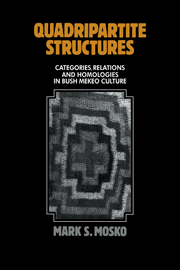Book contents
- Frontmatter
- Contents
- List of figures, tables, and maps
- Preface
- 1 Introduction: the problem and the people
- 2 Between village and bush
- 3 Body and cosmos
- 4 Sex, procreation, and menstruation
- 5 Male and female
- 6 Kin, clan, and connubium
- 7 Feasts of death (i): de-conception and re-conception
- 8 Feasts of death (ii): the sons of Akaisa
- 9 Tikopia and the Trobriands
- 10 Conclusions: indigenous categories, cultural wholes, and historical process
- Appendixes
- 1 Village resources derived from bush resources
- 2 Ingestion and ingestibles
- 3 Categories of food
- 4 Work and nonwork skills
- 5 Categories of human dirt
- 6 The myth of Foikale and Oa Lope
- 7 The afinama myth
- Notes
- Bibliography
- Index
6 - The myth of Foikale and Oa Lope
Published online by Cambridge University Press: 04 August 2010
- Frontmatter
- Contents
- List of figures, tables, and maps
- Preface
- 1 Introduction: the problem and the people
- 2 Between village and bush
- 3 Body and cosmos
- 4 Sex, procreation, and menstruation
- 5 Male and female
- 6 Kin, clan, and connubium
- 7 Feasts of death (i): de-conception and re-conception
- 8 Feasts of death (ii): the sons of Akaisa
- 9 Tikopia and the Trobriands
- 10 Conclusions: indigenous categories, cultural wholes, and historical process
- Appendixes
- 1 Village resources derived from bush resources
- 2 Ingestion and ingestibles
- 3 Categories of food
- 4 Work and nonwork skills
- 5 Categories of human dirt
- 6 The myth of Foikale and Oa Lope
- 7 The afinama myth
- Notes
- Bibliography
- Index
Summary
Version Fi
A long time ago in the region of Inauakina (a Bush Mekeo Village), there was a village (sic) where there were only men. No women, no girls, nothing but men. They gave birth by themselves (men to men), and upon being born they were already strong and able to search for their nourishment.
These men were savages. They did not wear clothes, lived in caves in the side of a hill, and did not even make gardens. Their only nourishment was a kind of earth called onkimo; they dried it in the sun and swallowed it that way.
The principal personages of this curious village were Foikale, Koikoipike, Kapankoupike, Maimaipike, and Ikangopo. They were very famous. Foikale was the chief.
In the same region, there was a family of which the husbands name was Oa Lope, and the wife was Oini. They had several children. Oa Lopes family completely ignored Foikale's village, and the latter had no acquaintance with Oa Lope.
One day, Foikale was going walk-about and came to a fence constructed of split and interlaced bamboos. Never had he seen such a thing. He made a tour of the border, found an opening, entered, and was stupefied at the sight of a garden of magnificent bananas. This was Oa Lope's garden. Keeping a distance, he cried, “Psh! Psh!” to see if the stalks of bananas would run away, but they did not. They stayed in place, immobile. Then he advanced and walked in the garden, wondering what this might well be.
- Type
- Chapter
- Information
- Quadripartite StructuresCategories, Relations and Homologies in Bush Mekeo Culture, pp. 258 - 264Publisher: Cambridge University PressPrint publication year: 1985



